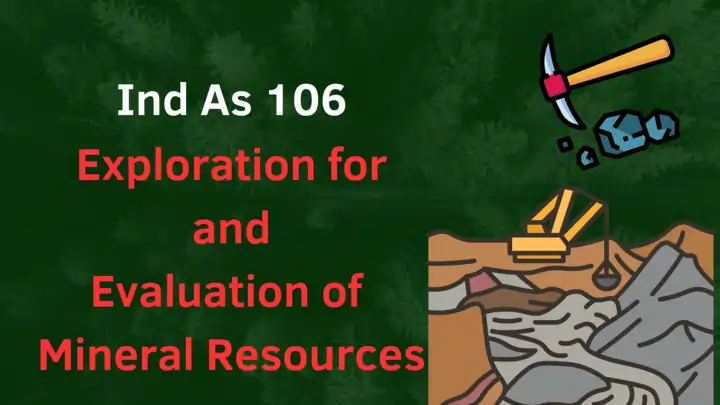Table of Contents
Ind AS 106, a part of the Indian Accounting Standards (Ind AS), focuses on the accounting treatment for exploration and evaluation activities related to mineral resources. This standard provides guidance to companies engaged in activities such as searching for oil, natural gas, and other non-regenerative resources. Let’s delve into the key aspects of Ind AS 106 and gain a better understanding of its implications.

Objective And Scope:-
The primary objective of Ind AS 106 is to establish the accounting treatment for exploration and evaluation activities related to mineral resources. The standard ensures that these activities are accounted for in a consistent and reliable manner, allowing stakeholders to make informed decisions based on accurate financial information.
Ind AS 106 applies to companies involved in exploration and evaluation activities for mineral resources. This includes activities such as conducting geological studies, drilling exploratory wells, and performing testing to assess the presence of economically viable resources. The standard covers both the initial recognition and subsequent measurement of exploration and evaluation assets.
Exploring and Evaluating Mineral Resources:-
Ind AS 106 emphasizes that exploration and evaluation assets must meet specific criteria to be recognized and capitalized. These assets include the costs incurred in searching for mineral resources, such as geological studies, drilling, and testing activities. The standard sets the stage for determining when these costs can be considered as assets and form part of the company’s financial statements.
Exploration Expenditures:-
The standard covers the accounting treatment for costs incurred in the exploration phase, including costs associated with searching for mineral resources and evaluating their technical feasibility.
Evaluation Expenditures:-
Ind AS 106 addresses the recognition and measurement of expenditures related to the evaluation of the technical, commercial, and financial viability of mineral resources. These expenditures typically occur after the identification of a potential resource during the exploration phase.
Capitalization Criteria:-
The standard sets out specific criteria that must be met for exploration and evaluation assets to be recognized and capitalized. This includes the presence of technical feasibility, an intention to explore, and the availability of adequate resources.
It’s important to note that the application and interpretation of Ind AS 106 may vary depending on the nature of the company and its activities. Each company needs to carefully assess its specific circumstances and seek professional advice to ensure compliance with the standard.
Recognition and Measurement:-
Companies following Ind AS 106 are required to assess their exploration and evaluation assets carefully. They must evaluate whether these assets meet the necessary criteria for recognition, such as the presence of technical feasibility, the intention to explore, and the availability of adequate resources.
Impairment Testing:-
Ind AS 106 also highlights the importance of periodic impairment testing for the exploration and evaluation of assets. Companies need to assess whether any indicators of impairment exist, such as a significant decline in commodity prices or adverse changes in the exploration area. If impairment is identified, the asset’s carrying amount should be reduced, and the impairment loss should be recognized in the financial statements.
Presentation and Disclosure:-
To ensure transparency and provide relevant information to users of financial statements, Ind AS 106 specifies the presentation and disclosure requirements. Entities are expected to disclose key information about their exploration and evaluation activities, including the nature of the assets, the stage of exploration, and the significant assumptions used in estimating the recoverable amounts.
Conclusion:-
Ind AS 106 plays a crucial role in the accounting treatment of exploration and evaluation activities related to mineral resources. By providing guidelines for recognition, measurement, impairment testing, and disclosure, this standard helps companies maintain transparency and accountability in their financial reporting. Understanding and applying Ind AS 106 correctly is essential for companies engaged in exploration and evaluation activities.